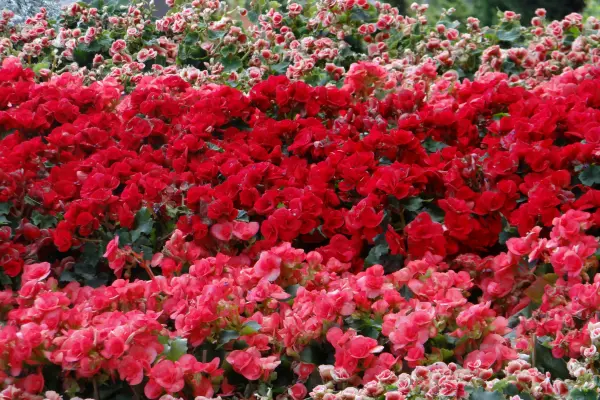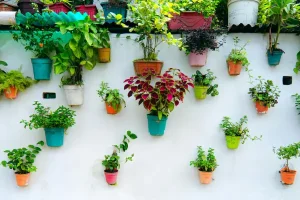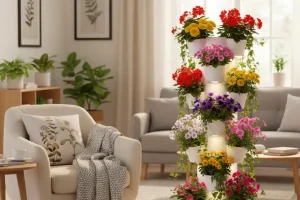Indoor vertical walls are a stunning way to bring nature into your home. They brighten up plain walls, improve air quality, and create a calming environment. But when you’re gardening indoors, sunlight is often limited. The good news is that plenty of flowers thrive in partial shade or low-light conditions, making them ideal for indoor living walls.
This guide highlights the best shade-tolerant flowers for vertical gardens, plus simple care tips so you can enjoy year-round beauty without worrying about sun exposure.
Why Shade-Tolerant Flowers Matter
Most indoor spaces don’t get the strong, direct light outdoor gardens do. Choosing the wrong plants leads to weak growth, yellowing leaves, or no blooms. Shade-loving flowers, however, adapt well to filtered light from windows or gentle artificial grow lights, ensuring:
- Longer bloom periods indoors
- Lower maintenance requirements
- Healthy, vibrant foliage even in low-light rooms
They’re also more forgiving if your schedule is busy or your apartment layout changes the light through the seasons.
Top Shade-Tolerant Flowers for Vertical Walls
1) Impatiens
Known for nonstop color in pink, red, white, and purple, impatiens are reliable bloomers in low to medium light. They like evenly moist media and respond well to regular, light feeding. Compact varieties fit neatly into pockets and keep flowering with minimal fuss.
2) Begonias
Begonias offer the best of both worlds: decorative foliage and vivid flowers. Wax and tuberous types handle indoor shade well, and many cascade gently, softening the grid of a wall planter. Give them good airflow and avoid overwatering to prevent leaf spotting.
3) Fuchsias
Those dangling, bell-shaped flowers are perfect for creating movement on a vertical wall. Fuchsias prefer bright, indirect light rather than hot sun. Keep roots cool, water consistently, and pinch lightly to encourage branching and more blooms.
4) Coleus (for foliage color)
Coleus is technically grown for leaves, but its color impact rivals flowers. Choose compact or trailing types for pockets and use them to create contrast—lime, burgundy, chartreuse, or speckled patterns brighten shady corners. Pinch tips to keep plants dense and tidy.
5) Torenia (Wishbone Flower)
Torenia produces cheerful trumpet-shaped blooms in purple, blue, pink, and white. It performs well in partial shade and brings a soft, trailing habit that fills gaps nicely. Keep soil lightly moist and deadhead spent flowers to extend bloom.
6) Pansies (for cooler rooms)
Pansies tolerate lower light and cooler indoor temperatures, which makes them great for winter walls or draft-prone spaces. Their bright faces add instant charm. Replace tired plants as seasons change to keep displays fresh.
7) Lobelia (trailing accent)
A fine-textured trailer with sky-blue or white blooms, lobelia shines in bright, indirect light. Use it at the edges of pockets to spill over and connect sections visually. Keep evenly moist; it doesn’t love drying out.
8) Peace Lily (flowering foliage option)
While better known as a foliage plant, peace lily sends up elegant white spathes even in low light. It’s a great “anchor” between brighter flower clusters and helps the wall look lush between bloom cycles.
Care Tips for Indoor Vertical Walls
Light
Place walls near bright windows with filtered light (sheer curtains help). If your room is dim, add slim LED grow bars on a timer for 10–12 hours per day. Aim lights slightly above the wall so the top row doesn’t hog all the brightness.
Watering
Vertical systems dry out faster—especially the top pockets. Check moisture daily with a finger test or a small moisture meter. Water thoroughly so it reaches lower levels, then let the top inch of media become slightly dry before the next cycle. If you use a recirculating system, clean filters weekly.
Fertilizing
Feed lightly every 2–3 weeks with a balanced, water-soluble fertilizer at half strength. Too much nitrogen grows leaves at the expense of blooms. For flowering pushes, switch briefly to a bloom-supporting formula, then return to balanced feeding.
Airflow & Humidity
Good airflow reduces mildew in low light. Leave a little space between plants, run a small fan on low nearby, and avoid pressing foliage against walls. Most shade lovers enjoy moderate humidity; a tray of pebbles or a room humidifier can help in winter.
Rotation
Swap plants seasonally to keep the display vibrant. Move heavy bloomers to prime light zones and rotate recovering plants to edges so they can rest and regrow.
Quick Reference Table
| Flower | Light Needs | Bloom Season | Notes |
| Impatiens | Low to medium light | Spring–Fall | Continuous blooms |
| Begonias | Low to medium light | Year-round | Decorative foliage + flowers |
| Fuchsias | Bright, indirect | Spring–Fall | Cascading display |
| Coleus | Low to medium light | Year-round | Foliage color |
| Torenia | Medium, filtered | Summer–Fall | Compact growth |
| Pansies | Low to medium light | Fall–Winter | Cool-season blooms |
Common Mistakes to Avoid
- Placing flowers in direct harsh light – causes leaf burn in shade-loving varieties.
- Overwatering vertical walls indoors – poor drainage can lead to root rot.
- Ignoring airflow – crowded plants in low-light conditions are more prone to mildew.
FAQs
Q: Can I grow these flowers without grow lights?
Yes, but they’ll do best near bright windows. If your space is very dark, supplemental lighting helps.
Q: How often should I replace flowers in an indoor vertical wall?
Annuals like impatiens may need replanting each season, while begonias and coleus can last longer indoors.
Q: Do shade flowers bloom as much as sun-loving ones?
They may bloom less heavily, but many (like impatiens and begonias) flower continuously in the right conditions.
Next Steps & Related Reading
If you want to experiment with design, see Designing a Color-Blocked Vertical Flower Garden for creative ways to arrange blooms.
For year-round floral displays, check out How to Extend Bloom Time in Your Vertical Flower Tower.
Conclusion
Shade-tolerant flowers like impatiens, begonias, and fuchsias make indoor vertical walls both beautiful and practical. By choosing plants that thrive in filtered light and giving them proper care, you can enjoy a colorful, low-maintenance living wall year-round.
Which shade-tolerant flower would you choose first for your indoor wall—impatien’s bright colors or begonia’s dramatic foliage?




